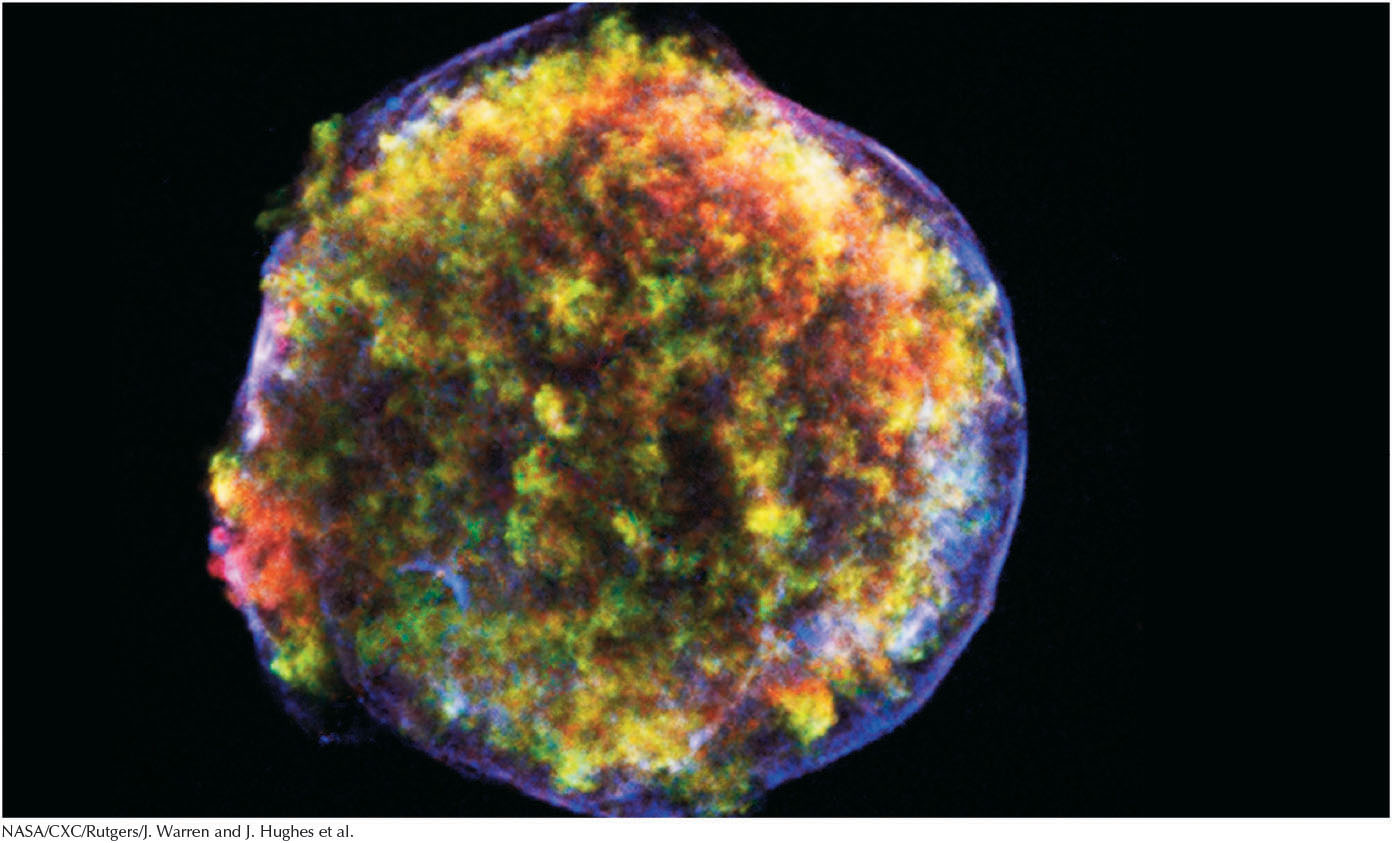405
CHAPTER [strong]13[/strong]

The Deaths of Stars
WHAT DO YOU THINK?
 Will the Sun someday cease to shine brightly? If so, how will this occur?
Will the Sun someday cease to shine brightly? If so, how will this occur?
 What is a nova? How does it differ from a supernova?
What is a nova? How does it differ from a supernova?
 What are the origins of the carbon, silicon, oxygen, iron, uranium, and other heavy elements on Earth?
What are the origins of the carbon, silicon, oxygen, iron, uranium, and other heavy elements on Earth?
 What are cosmic rays? Where do they come from?
What are cosmic rays? Where do they come from?
 What is a pulsar?
What is a pulsar?
Answers to these questions appear in the text beside the corresponding numbers in the margins and at the end of the chapter.
406
Most video and computer games have one thing in common: Players move through different levels, each progressively more difficult than the last. The biggest challenge comes at the final level, when you have to face the most powerful or evil entity. Stellar evolution is similar, with stars passing through different stages of stellar activity before they can move on to the next stage. There is one big difference—a game player can win the final level, but a star at the final stage of evolution always ceases to shine with the vigor that it had previously. In the end, stars more massive than red dwarfs eject vast quantities of gas and dust into interstellar space. In human terms, they die. In this chapter and in Chapter 14, we learn how the later stages of stellar evolution are significantly different for stars with different masses. Some of them stop evolving by relatively mild emissions of their outer layers, while others have spectacular finales.
In this chapter you will discover
 what happens to stars when core helium fusion ceases
what happens to stars when core helium fusion ceases
 how heavy elements are created
how heavy elements are created
 the characteristics of the end of stellar evolution
the characteristics of the end of stellar evolution
 why some stars go out relatively gently, and others go out with a bang
why some stars go out relatively gently, and others go out with a bang
 the incredible density of the matter in neutron stars and how these objects are observed
the incredible density of the matter in neutron stars and how these objects are observed